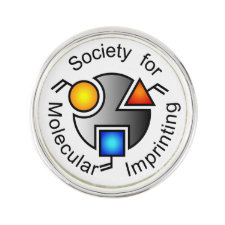
Authors: Wu HY, Li X, Meng SC, Xu JC, Zhang WC, Jiang Y, Qiu FX
Article Title: A comprehensive theoretical study of structural optimization, interaction energies calculations and solvent effects between ractopamine and functional monomers in molecular imprinting polymers.
Publication date: 2018
Journal: Polymer Bulletin
Volume: 75
Issue: (5)
Page numbers: 1981-1996.
DOI: 10.1007/s00289-017-2140-x
Abstract: A theoretical study on the interaction of the ractopamine (RAC) with functional monomers in the formation of imprinted polymers was investigated by means of quantum chemical calculations. In the present work, all structural optimization, interaction energies calculations and solvent effects were performed using density functional theory (DFT) method. The obtained data from five systems were used to evaluate the ability to form non-covalently bonded monomer-template complexes under vacuum and the different solvents conditions. These systems were presented by the following monomers: acrylic acid (AA), methacrylic acid (MAA), trifluoromethylacrylic acid (TFMAA), acrylamide (AAm) and methylacrylamide (MAAm). The solvent effects of pre-polymerization were considered using the solvation model based on density (SMD) in five solvents (toluene, chloroform, methanol, acetonitrile and dimethyl sulphoxide (DMSO) in this work. The results were evaluated through the solvation energy and the reaction energetics. Computer simulation of the interaction between the ractopamine and functional monomers indicated that although TFMAA has a strong interaction with the template in comparison to other complex forms in gas phase; it possesses non-specific interaction with the ractopamine molecule in solution. Moreover, MAAm was suitable for imprinting ractopamine, because the strongest interaction occurred between ractopamine and MAAm with a polymerization ratio of 1:4 in DMSO. The values of Δ G and Δ E were 26.30 and 40.51 kcal mol-1, respectively. This work may be useful for providing information for the choice of suitable functional monomer and proper solvent in the preparation of RAC molecularly imprinted polymers
Template and target information: ractopamine, RAC
Author keywords: Ractopamine, functional monomers, Density functional theory, molecular imprinting polymers



Join the Society for Molecular Imprinting

New items RSS feed
Sign-up for e-mail updates:
Choose between receiving an occasional newsletter or more frequent e-mail alerts.
Click here to go to the sign-up page.
Is your name elemental or peptidic? Enter your name and find out by clicking either of the buttons below!
Other products you may like:
 MIPdatabase
MIPdatabase









